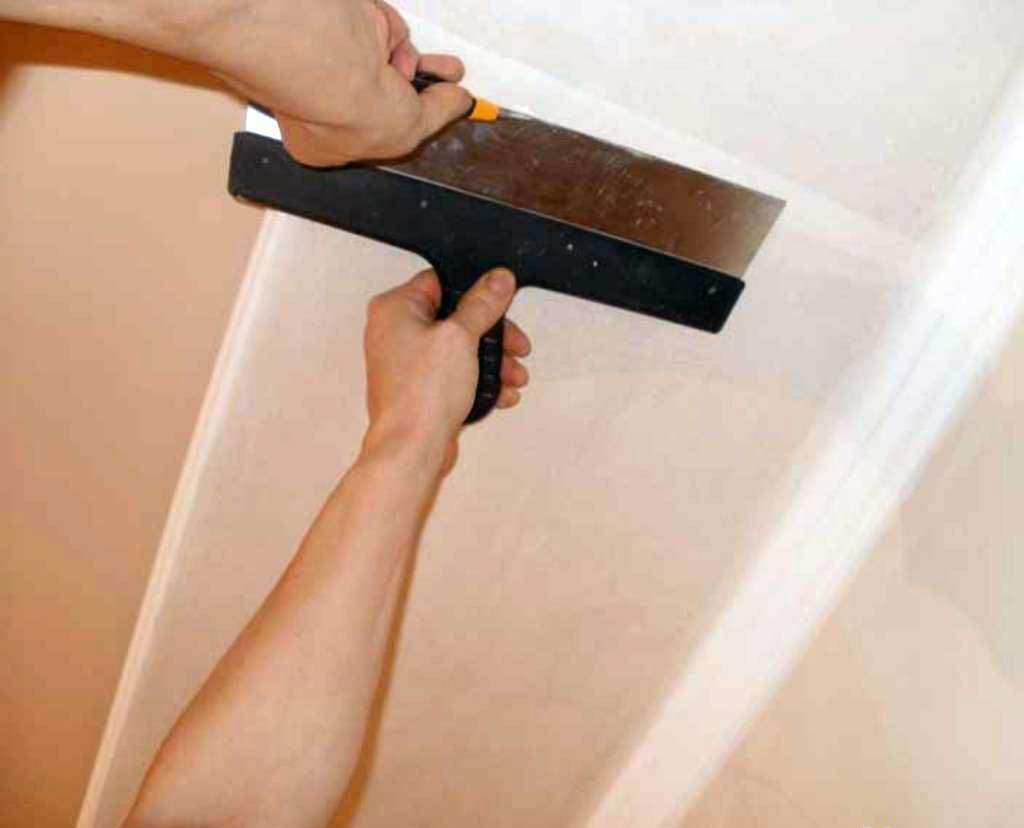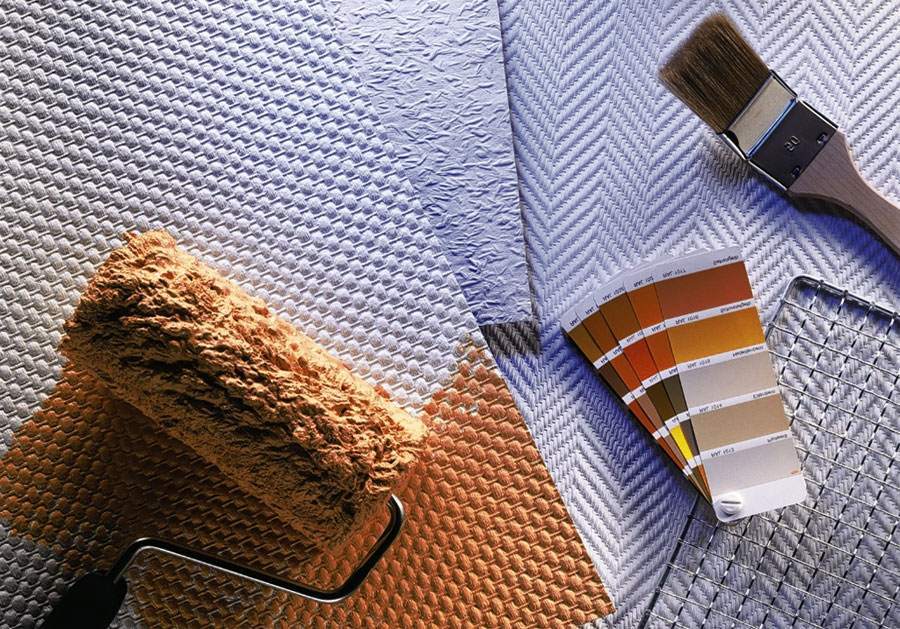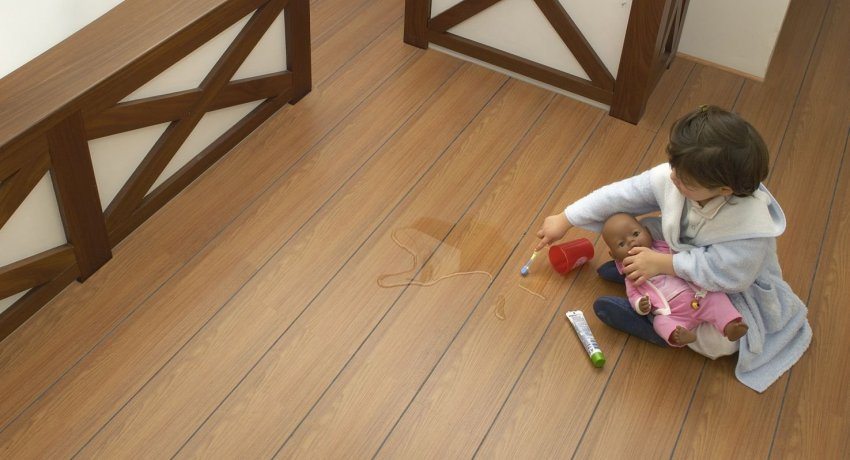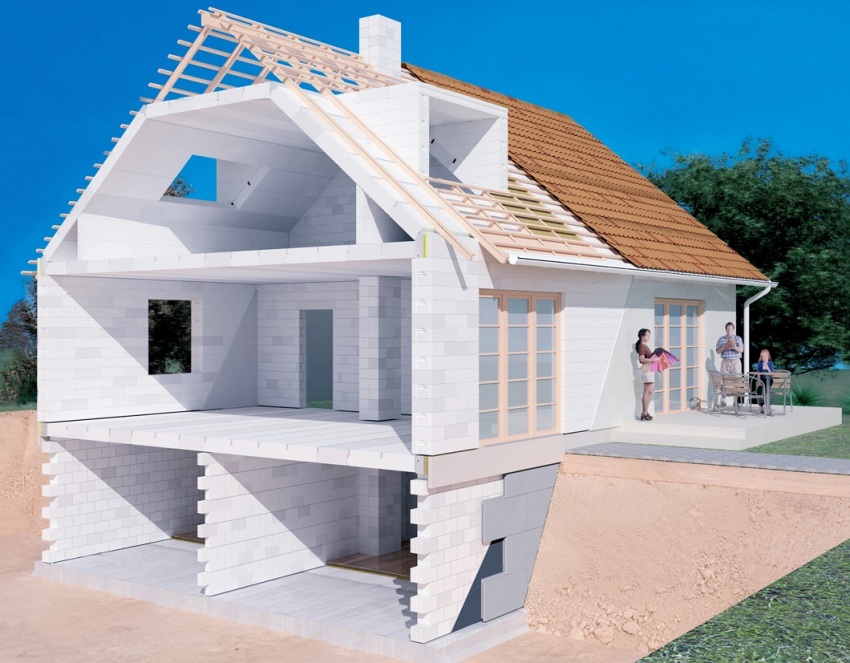Content
- Step into the story
- Glass production
- Pros and cons of fiberglass wallpaper
- Characteristics of cullet for painting
- Features of using fiberglass
- Nuances of pasting the ceiling
- Glass painting
- Fiberglass Wallpaper Care
There are many different materials used to decorate the apartment, one of them is fiberglass. Cullets in the interior of modern apartments are not common, but this is not due to their shortcomings, which are not so many, but to the relative novelty of this material. To some, he seems too unusual, to others - dear. But in any case, fiberglass wallpapers deserve attention, so we suggest you get to know them better. Perhaps this is exactly what you need, but you just did not know about it?

Step into the story
Cullets were first used in the 30s of the last century. Their creator can be considered a private German factory Koch GmbH from the city of Steinach: it was at this enterprise that the first batch of fiberglass wallpaper was produced. Later, the company was renamed VITRULAN Textilglas GmbH and founded the new, now world-famous brand of fiberglass wallpaper VITRULAN.
Initially, only colored glass was used in the manufacture of cullets.
In the fifties, factories producing fiberglass appeared in many other cities in Europe, and later they spread throughout the world. Today, the largest glass-producing countries can be considered the Czech Republic, China, Sweden, and, of course, Germany and Russia.

Glass production
Despite a decent period of existence, the composition of fiberglass wallpaper did not change, only the technology for their production was slightly improved. It includes:
- lime;
- dolomite;
- sodium carbonate (soda known to all);
- quartz sand.
All four components of cullets are natural raw materials. The principle of making wallpapers is quite simple: thin threads — a kind of yarn — are drawn from special glass at a temperature of 1200 degrees Celsius (melting temperature). Then the material itself is woven from it, which is rolled up. If it is just a spider line painting fiberglass, then the usual fabric is woven. If it is fiberglass wallpaper, then in the process receive textured drawings or decor in a cypress or linen weaving.
USEFUL INFORMATION:Minimum screed thickness: save wisely

Pros and cons of fiberglass wallpaper
So, let's start with the minuses of fiberglass wallpaper (they are much smaller):
- Cullets for painting have a less noticeable texture of the decorative layer than for structural wallpaper; after applying several layers of paint, it can become almost invisible.
- High cost of the product - high-quality cullets of well-known brands may not be affordable for the average consumer.
- Actual paint consumption exceeds the declared on the packaging - fiberglass wallpapers absorb dye well.
- Problem dismantling - if the gluing of cullet for painting took place correctly, subject to all conditions, then removing them is very, very difficult.
- When gluing, it is worth considering the possibility of the smallest particles of fiberglass getting on the skin, so work is better carry out with gloves, there should not be open areas of the body, the best solution is to use respirator.
And now about the pros:

- The use of only natural materials in the manufacture of cullets allows us to talk about the complete environmental friendliness of products. And in our artificial age, this is already a lot.
- There is no breeding ground for cullet fungus mold and microorganisms.
- High durability - such wallpapers do not tear, they cannot be scratched, they are not afraid of chemical effects.
- The material is not able to accumulate static electricity, wallpaper does not attract dust.
- Due to the special weaving, cullet does not interfere with the circulation of air in the room, improves the microclimate.
- Fire safety - fiberglass does not burn and does not emit harmful substances in case of fire.
- Cullets can be painted more than 10 times.
- The service life of fiberglass wallpaper is more than 30 (!) Years.
Characteristics of cullet for painting
Fiberglass wallpapers have their own characteristics.
- Standard sizes of fiberglass wallpaper: width - 1 meter, roll length - 50 meters, density - from 100 g / sq. m. "Spider line" has a lower density, which usually does not exceed 50 g / sq. m
- Currently, all manufactured fiberglass wallpapers are white. If desired, they can be painted in any shade.
- The texture of the cullet is different: from the popular small "matting" and "herringbone" to the pronounced patterns. At the request of the customer, manufacturers can make an individual drawing, but such a whim will cost a lot.
USEFUL INFORMATION:How to make a plasterboard ceiling with your own hands: marking, assembly, decoration

In addition, it should be said that fiberglass wallpapers come in two varieties: the first and second. Wallpaper of the second grade refers to the economy class materials, have a non-standard length of the canvas. But, as a rule, inclusions of marriage are insignificant and such cullets can be used to decorate walls.
Quality wallpapers always have a certificate of conformity, so when buying it is not out of place to ask the seller about its availability.
Features of using fiberglass
Cullets can be used absolutely in any room of the apartment: in the kitchen, in the children's room, in the bathroom, in the bedroom or living room - they will be appropriate everywhere. They look equally good both on the walls and on the ceiling.
The base material is also not regulated, it can be:
- plastic;
- metal;
- tree;
- drywall;
- Chipboard, etc.

The main thing to remember when gluing fiberglass wallpaper is that the entire surface of the base should be smooth and suitably prepared (puttied, primed).
General rules for gluing glass:
- The glue is applied not on the wallpaper, but on the surface to be glued (a special glue for fiberglass is taken).
- Cullet glued butt.
- Glass paste is pasted at room temperature and humidity not exceeding 75%.
- There should be no drafts in the room when working with fiberglass and drying.
- When pasting, a piece of wallpaper is firmly pressed to the surface, using a special spatula, air is expelled from under it.
- After gluing, the joints of fiberglass wallpaper are treated with a special roller for better adhesion to the surface.

Please note: for fiberglass wallpaper, the front side is always inside the roll.
Nuances of pasting the ceiling
Fiberglass for the ceiling has its own characteristics in work. If you want to save money and work independently as a decorator-painter, then you should remember the following points.
- For gluing the ceiling, painting glass fiber - “spider line” is used.
- Glue is applied directly to the ceiling with a strip a little wider than the wallpaper.
- Pasting starts from the wall opposite the wall with the door, the strips are glued parallel to it.
- The first strip of fiberglass wallpaper is glued according to the line drawn.
- Fiberglass for the ceiling is always glued only together: it is problematic to simultaneously hold the canvas and smooth it.
- If you want to get a smooth smooth surface, then you need to walk along the ceiling over fiberglass finishing putty.
USEFUL INFORMATION:Secrets of preparing walls for wallpapering

Fiberglass can also be used for reinforcing and strengthening the surface. In this case, the cobweb is glued, then primed, and then putty is putty. With such a basis, further work can be done.
Fiberglass for the ceiling does not require any special care, everything is standard: a vacuum cleaner and wet cleaning.

Glass painting
To properly paint the ceiling or walls glued with glass, you need to know several important rules:
- After gluing and drying, a thick layer of thick glue is applied to the fiberglass wallpaper, due to which the paint will lie more evenly.
- Staining itself is performed a day after gluing the glass.
- The paint is applied to the glass in two layers, with an interval of 12 hours. It is desirable that the composition is hydrophobic, specially designed for dyeing fiberglass. The best option will be the use of water-based and latex paints.

Fiberglass Wallpaper Care
Cullet does not require special care, the material is very durable and strong. Fiberglass can be safely used in rooms with high humidity. Wallpaper can be wiped with a damp cloth and even washed with various detergents, there will be no abrasion.

In conclusion, I want to say: if you like to change color schemes in your apartment, then cullet will fit perfectly. Withstanding dozens of stains, such wallpapers will be a great backdrop for the realization of any fantasy.


